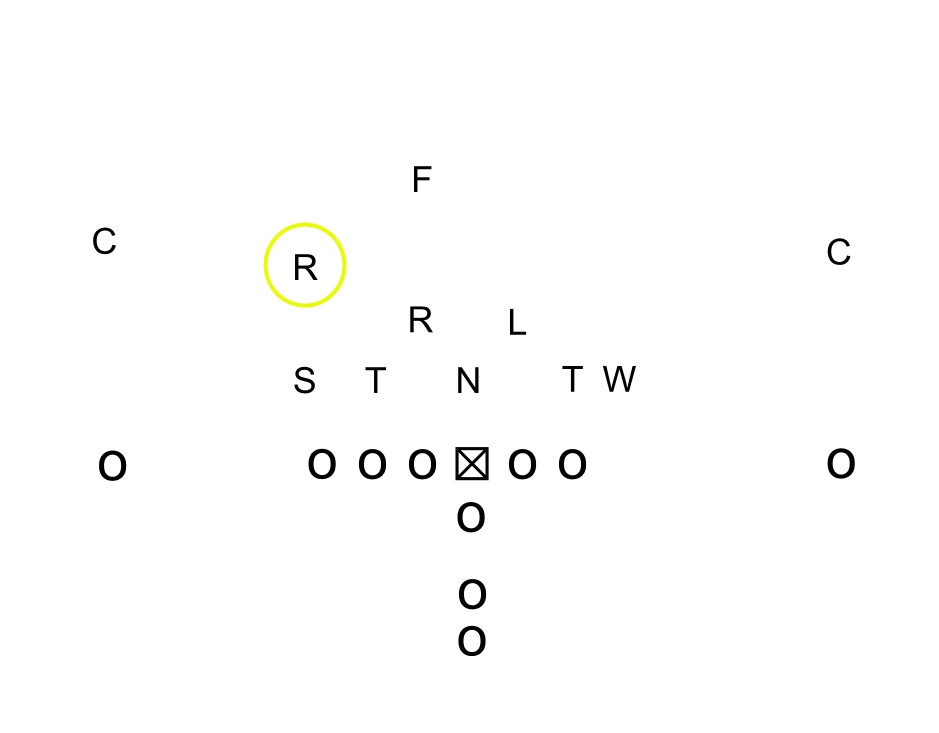
The story of Tech’s current run of defensive excellence usually starts with Frank Beamer, Bud Foster and Phil Elmassian coming together and casting aside an antiquated 6-2 defense in order to bring a hard-nosed, modern front to Blacksburg. And that’s a story I’ll tell. But to tell it right, I think you have to go back further to the origins of this new defense.
Those origins are found with the University of Washington Huskies, then coached by Don James. In the late 1980s, the Huskies used a version of the Okie 5-2, a defense that was the foundation of today’s 3-4 defense. Unlike today’s 3-4, this older defense employed a mix of one and two-gap techniques and kept the linebackers close to the line, so it was basically a five-man line (James himself called it a 50-front.) The line was shifted to the TE side, with two inside linebackers behind it. A strong safety matched the tight end, meaning the core coverage was a Cover 3 look that had the corners and free safety playing deep thirds.

James found that his defense had a hard time adjusting to pre-snap motion, which was becoming more and more prevalent as old offenses like the Wishbone gave way to I and Split-formations. (Editor’s note: Yes, the I-formation and split back formations were once considered modern and innovative.) One of the biggest problems came when the tight end motioned from one side of the formation to the other. When that happened, a safety had to run across the formation and the entire defensive front had to move around. This caused problems with run fits and pass coverage. Coupled with the scheme’s aging against complex passing schemes and a few bad defensive performances, James switched schemes in the second half of the 1989 season.
The defense transitioned to a 4-4 scheme inspired by Buddy Ryan’s schemes with the Chicago Bears. The new 4-4 kept a fair number of the old scheme’s keys and plays intact, but within the framework of a single-gap defense. James eliminated the nose tackle and turned the strong safety into a linebacker who didn’t have to follow anyone around.
...Subscribe to read full story
Tired of low effort articles and clickbait? So are we. Subscribe to read great articles written by a full-time staff with decades of experience.
Already a subscriber? Login Here



